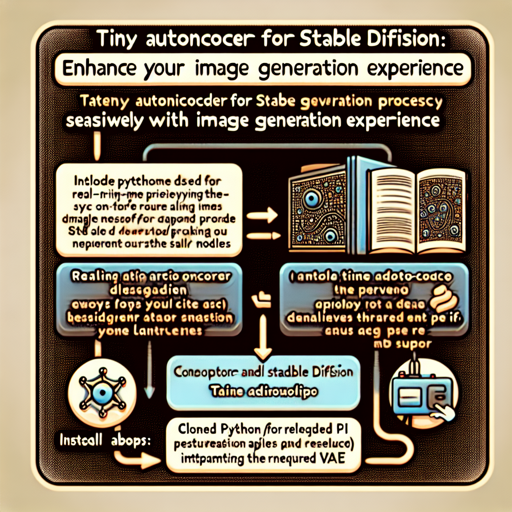Are you ready to take your image generation to the next level? In this article, we’ll dive into the world of the Tiny AutoEncoder for Stable Diffusion (TAESD). This remarkable little autoencoder works seamlessly with the same latent API as Stable Diffusion’s VAE and is designed for real-time previewing of the image generation process.
Getting Started with TAESD
Installing and utilizing TAESD is straightforward. Here’s a step-by-step guide to set it up:
- Step 1: Ensure you have Python and the necessary libraries installed, particularly
torchanddiffusers. - Step 2: Clone the TAESD repository from here.
- Step 3: Import the necessary modules and instantiate the pipeline.
Implementing TAESD in Your Code
Now, let’s delve into the code. It may seem daunting at first, but think of it as a recipe for a delicious cheesecake. Each ingredient and step plays a vital role in achieving that perfect end result.
Here’s the code you need:
import torch
from diffusers import DiffusionPipeline, AutoencoderTiny
pipe = DiffusionPipeline.from_pretrained(
"stabilityai/stable-diffusion-2-1-base", torch_dtype=torch.float16
)
pipe.vae = AutoencoderTiny.from_pretrained("madebyollin/taesd", torch_dtype=torch.float16)
pipe = pipe.to("cuda")
prompt = "slice of delicious New York-style berry cheesecake"
image = pipe(prompt, num_inference_steps=25).images[0]
image.save("cheesecake.png")Explaining the Code: The Cheesecake Analogy
In our cheesecake analogy:
- Importing ingredients:
import torchand the modules is like gathering your baking tools and ingredients. - Choosing your base recipe: The
DiffusionPipeline.from_pretrained()function is akin to selecting your baseline cheesecake recipe. - Adding flavor: Setting the VAE with
AutoencoderTiny.from_pretrained()is like mixing in your favorite flavor—here, we add the tiny autoencoder. - Baking: When you pipe in your prompt and inference steps, it’s the process of baking your cheesecake, which results in the beautiful slice of cheesecake image.
- Serving: Finally, saving the image is like plating your cheesecake in a stunning presentation for everyone to admire.
Troubleshooting Your Setup
If you encounter any issues while using TAESD, here are some troubleshooting ideas:
- Check your dependencies: Make sure that all required libraries are installed and up to date.
- CUDA compatibility: Ensure that you have compatible CUDA drivers installed if you’re using a GPU.
- Memory issues: If you run into memory errors, consider lowering the resolution of your images or the number of inference steps.
- Connection errors: If models aren’t downloading correctly, check your internet connection or look for repository updates.
For more insights, updates, or to collaborate on AI development projects, stay connected with fxis.ai.
Conclusion: Push the Boundaries of AI
At fxis.ai, we believe that such advancements are crucial for the future of AI, as they enable more comprehensive and effective solutions. Our team is continually exploring new methodologies to push the envelope in artificial intelligence, ensuring that our clients benefit from the latest technological innovations.
Now you’re all set to unleash the power of Tiny AutoEncoder for Stable Diffusion. Happy generating!

